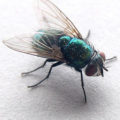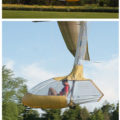
Writing in Physical Review Letters, Dartmouth College researchers have proposed a new way of creating a reproduction black hole in the laboratory, albeit on a much-tinier scale than their celestial counterparts.
The researchers say that creating a tiny quantum sized black hole would allow them to better understand what physicist Stephen Hawking proposed more than 35 years ago: black holes are not totally void of activity; they emit photons, which is now known as Hawking radiation.
“Hawking famously showed that black holes radiate energy according to a thermal spectrum,” said Dartmouth’s Paul Nation, one of the authors of the paper. “His calculations relied on assumptions about the physics of ultra-high energies and quantum gravity. Because we can’t yet take measurements from real black holes, we need a way to recreate this phenomenon in the lab in order to study it, to validate it.”
In the new paper, the researchers show that a magnetic field-pulsed microwave transmission line containing an array of superconducting quantum interference devices (SQUIDs), not only reproduces physics analogous to that of a radiating black hole, but does so in a system where the high energy and quantum mechanical properties are well understood and thus can be directly controlled in the laboratory.
The researchers claim that such a setup would allow the exploration of analogue quantum gravitational effects. “We can also manipulate the strength of the applied magnetic field so that the SQUID array can be used to probe black hole radiation beyond what was considered by Hawking,” said co-researcher Miles Blencowe.
Related:
Rethinking Black Holes
Orphan Black Hole Puzzles Astronomers
The Great Escape
The Universe As Magic Roundabout: Part II








Comments are closed.